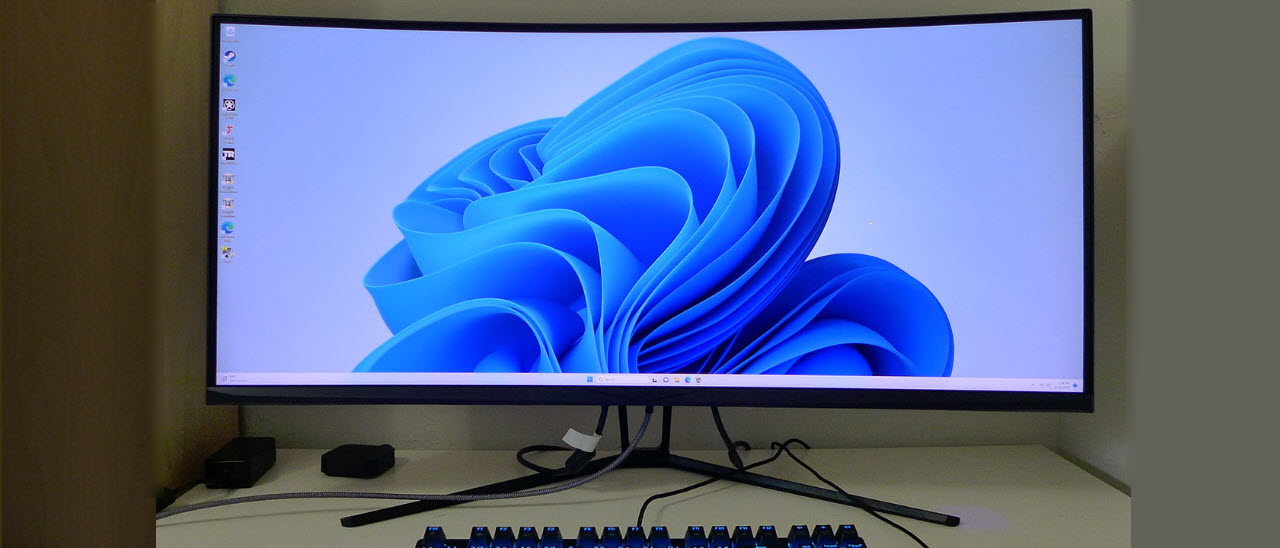Why you can trust Tom's Hardware
Our HDR benchmarking uses Portrait Displays’ Calman software. To learn about our HDR testing, see our breakdown of how we test PC monitors.
Besides the bump in refresh rate to 120 Hz, the 38035-2 adds HDR support to its feature list. You’ll want to set HDR to Auto Detect in the Other menu, so it switches modes automatically.
HDR Brightness and Contrast
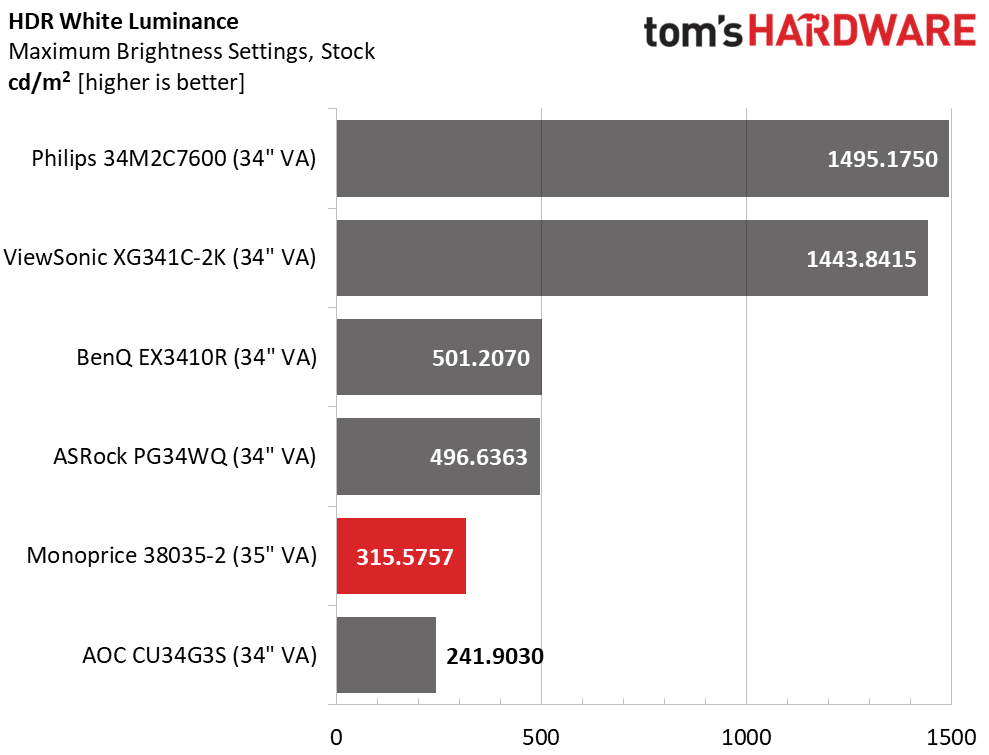
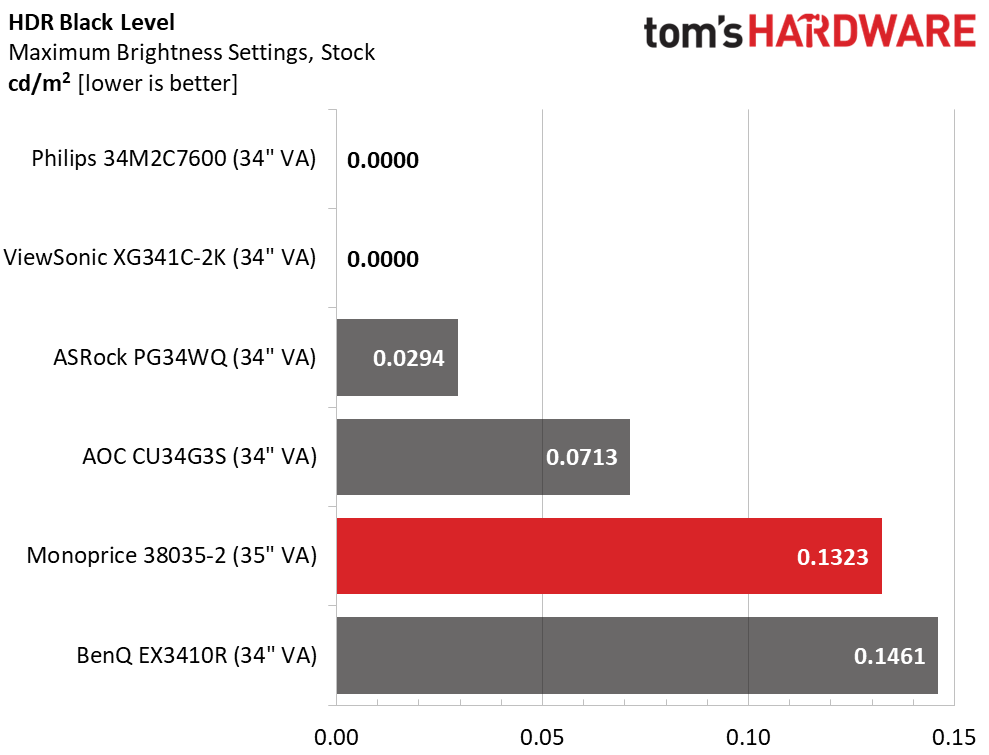
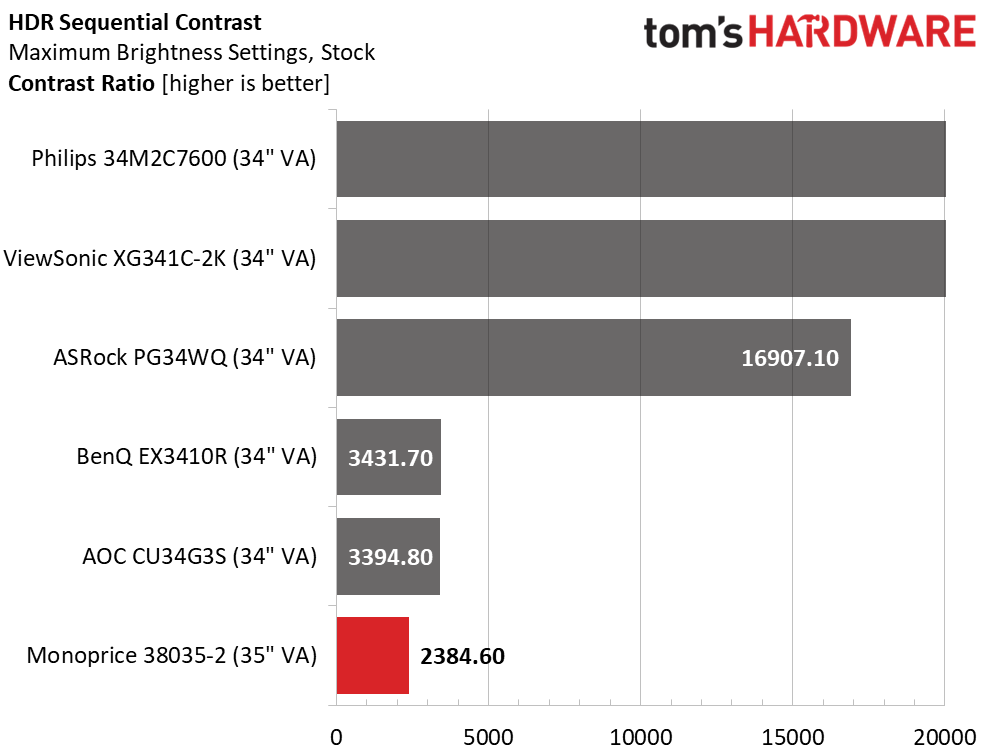
The 38035-2 is slightly less bright in HDR mode with a peak white level of 315 nits. The black level is still fairly low so there’s plenty of contrast but no more so than in SDR mode. This is typical of value-priced HDR monitors. You won’t get a ton of extra impact, but HDR looks a little better with properly mastered games and video content.
Grayscale, EOTF and Color
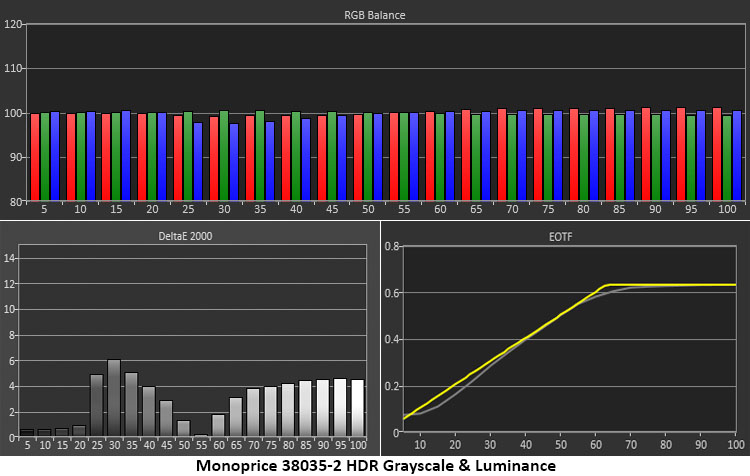
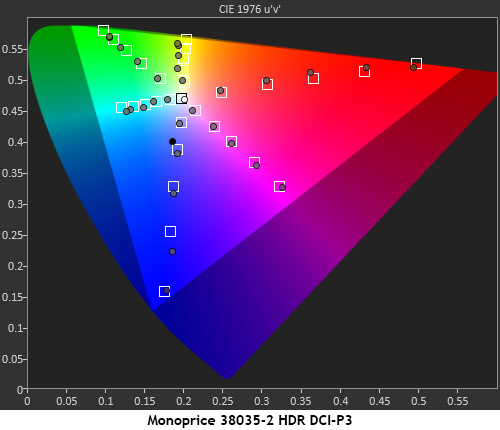

Some slight green errors can be seen in the 38035-2’s HDR brightness steps between 25 and 45%. Brighter steps are a tad warm in tone. These issues can be seen in some content, but they don’t lessen the HDR effect because the EOTF luminance curve is almost exactly on the reference line. The tone-map transition is at 60% which is correct for a monitor of this peak brightness that does not employ dynamic contrast.
The 38035-2 has excellent HDR color tracking with hue and saturation points on or close to all targets. This is better than expected for a $400 monitor and it means HDR content will be visibly more vivid than SDR. The DCI-P3 chart shows full coverage for every color except green which is only a tad under-saturated at the 100% point. The Rec.2020 chart shows the same behavior with color points on target until the display runs out of color around at the 85% level. This is excellent performance.
Test Takeaway: The 38035-2 has no more HDR contrast than SDR but with accurate luminance and color tracking, it manages a very good HDR image. For $400, it doesn’t get much better. HDR has been successfully added to the 38035-2 for no extra cost over its predecessor and that’s a win.
MORE: Best Gaming Monitors
Get Tom's Hardware's best news and in-depth reviews, straight to your inbox.
MORE: How We Test PC Monitors
MORE: How to Buy a PC Monitor
MORE: How to Choose the Best HDR Monitor

Christian Eberle is a Contributing Editor for Tom's Hardware US. He's a veteran reviewer of A/V equipment, specializing in monitors. Christian began his obsession with tech when he built his first PC in 1991, a 286 running DOS 3.0 at a blazing 12MHz. In 2006, he undertook training from the Imaging Science Foundation in video calibration and testing and thus started a passion for precise imaging that persists to this day. He is also a professional musician with a degree from the New England Conservatory as a classical bassoonist which he used to good effect as a performer with the West Point Army Band from 1987 to 2013. He enjoys watching movies and listening to high-end audio in his custom-built home theater and can be seen riding trails near his home on a race-ready ICE VTX recumbent trike. Christian enjoys the endless summer in Florida where he lives with his wife and Chihuahua and plays with orchestras around the state.
-
MarioAndLuigiPlumbing ReplyTom Sunday said:Actual buyers at Amazon did not give Monoprice a good review. Looks like the company is still in its infancy and is short in expected customer service and the quality of the product is seen to be generally poor. So in this respect they have a ways to go! As such pricing here does not play a big role!
Monoprice has been around since 2002 - so, no, they are not in their infancy. Why is someone buying Monoprice from Amazon when they have their own retail site? I've ordered from m/p plenty of times. Only once did I have a problem and they replace the item quickly because it was under warranty.
